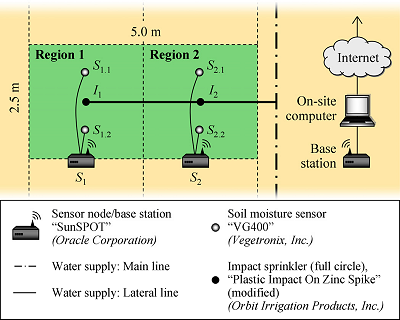Bauhaus Universität Weimar
Professur für Informatik im Bauwesen
Prof. Dr.-Ing. Kay Smarsly
The Chair of Computing in Civil Engineering at Bauhaus University Weimar conducts interdisciplinary research focusing on the application of advanced computing, information and communication technologies to civil and environmental engineering. As society tries to cope with emerging societal and environmental problems such as environmental pollution, global climate change and decaying infrastructure, current research efforts are dedicated to complex multi-scale problems in the built and in the natural environment. More specifically, a primary area of research concerns autonomous monitoring and intelligent structural systems, where intelligent wireless sensor networks, remotely connected to decentralized computer systems, are embedded into built or natural structures enabling a reliable and cost-efficient monitoring of the structures observed.
In common monitoring practice, it is well known that sensor faults may considerably reduce the monitoring quality and, if remaining undetected, might cause substantial economic loss due to inaccurate or missing sensor data. Therefore, within this research area new approaches towards fault-tolerant monitoring systems are being investigated. While conventional approaches towards fault tolerance usually require redundant sensors (which involves considerable penalties in cost and maintainability), the strategy proposed herein makes use of the information inherent in the monitoring system and the known relationships between the sensors without the need for redundant sensors (“analytical redundancy”). Decentralized partial models of the monitoring system, implemented directly into the wireless sensors, enable each sensor to self-detect sensor faults in real time while efficiently using the limited computing resources (Fig. 1). Furthermore, to advance the flexibility and efficiency of monitoring, the concept of agent migration is introduced. Autonomous software programs (“mobile software agents”), which are embedded into the intelligent sensors, are capable of physically migrating from one wireless sensor to another. In case of suspected anomalies, the mobile software agents autonomously migrate to distinct sensors to conduct in-situ data analyses using specific expert knowledge. As a result, the amount of wirelessly transferred sensor data and the resource consumption of the sensors are substantially reduced. Recent studies have demonstrated that through the migration-based approach – compared with traditional approaches – a reduction of power consumption of the wireless sensors up to 96% can be achieved.
Together with industrial partners and research institutions in Germany and abroad, the proposed concepts and methods are implemented and validated in diverse applications in the built and in the natural environment, including, for example, autonomous monitoring (i) of wind turbines, supporting a sustainable monitoring-based life-cycle management, (ii) of slope conditions, enabling early warnings in case of hazardous slope movements or suspected landslides, or (iii) of soil parameters, allowing for intelligent irrigation control and significantly reduced freshwater consumptions in agricultural ecosystems.
Further information can be found at http://www.uni-weimar.de/cce

